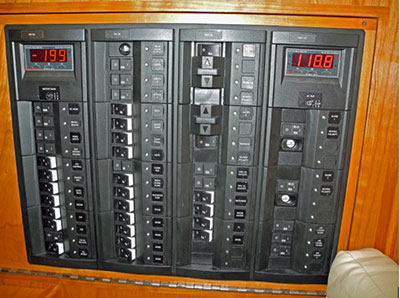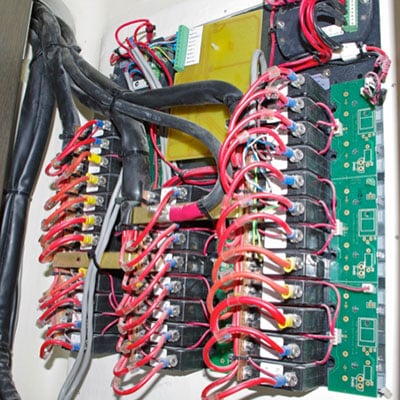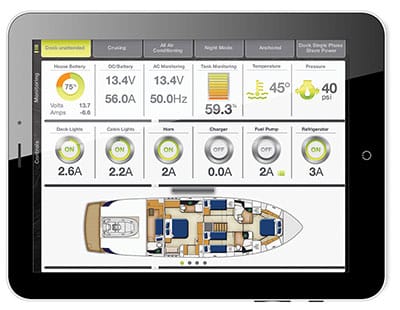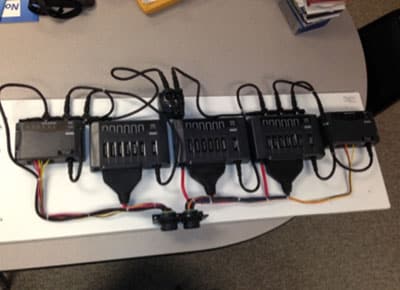Dave Schmidt’s article “Tap-Happy Reactions” in the September 2013 issue of Yachting does a great job of explaining some of the advantages to the concept of digital switching: wireless functionality, a reduction in wiring required and the resultant simplification and weight savings. In addition to the areas David mentions, we need to also emphasize reliability, which centers on several common-sense, but not-so-obvious facts. Check out the panel board face below:

The panel above has many moving parts that eventually wear out. It looks complicated and intimidating to some users. The backside of panels like this is even more telling:

In the photo above, you can see that all of the bus bars and termination points for the wiring are exposed. Granted they are hidden behind the panel and inside cabinetry, but sill exposed to sea air. Eventually, corrosion will impact the performance of this arrangement. This, in turn, will create annoying service requirements at the very least and annoying equipment reliability issues at it worst. Compare that panel face above to this one:

The touchscreen shown above not only eliminates moving parts; it’s less intimidating, and if designed properly, can be quite intuitive and easy to understand. Hermetically sealed, it will last for years with zero maintenance.
The behind the scenes of digital switching typically consists of hermetically sealed black boxes inter-connected with waterproof terminal plugs such as those used in today’s aircraft and automotive applications. This makes them far less susceptible to the rigors of the marine environment. The photo below shows a typical setup with the various black boxes linked together. Expanding a system like this is just a matter of adding a black box here and there and linking it with a waterproof cable harness.










